Kruger National Park in South Africa was incredible – even more amazing than I’d been expecting. Getting to see so many animals in the wild – incredibly close in some cases – was such a fantastic experience.
In an ideal world when going on safari there – whether self-drive or guided – you’d have a decent camera with good lenses to be able to capture excellent photos. Shae had her camera and lenses with us and we’ll be publishing a post with the best of those this coming week.
Although having a good camera is the ideal scenario, it was still possible to capture some great photos using our phones. Shae and I both have Google Pixel 6 phones (affiliate link) and we’ve been pleased with the quality of the photos, the Night Sight and Magic Eraser features, etc.
In addition to a post with photos taken with Shae’s Nikon camera, I wanted to publish this post with photos taken with our phones. A few of the animals we saw were too far away to be able to capture with any kind of quality using the zoom on our phones. We came up with a solution though; we lined up the phone’s camera lens with an eyepiece on the pair of binoculars we were using and voilà – much clearer photos than would’ve been achieved without the binoculars. I’ve made a note on photos below that were taken with binoculars in case you’re interested.
Without further ado, here are some of the best photos we took with our phones at Kruger National Park.
Elephants
The first couple of these photos were taken as we left Kruger on our first day. We’d driven across Crocodile Bridge (the bridge that crosses Crocodile River to enter the park at that entrance gate) and on the other side of the river was this elephant. We kept the vehicle in drive in case he decided to get too close, but he kept a safe (for us!) distance while also being close enough to get some incredible photos.
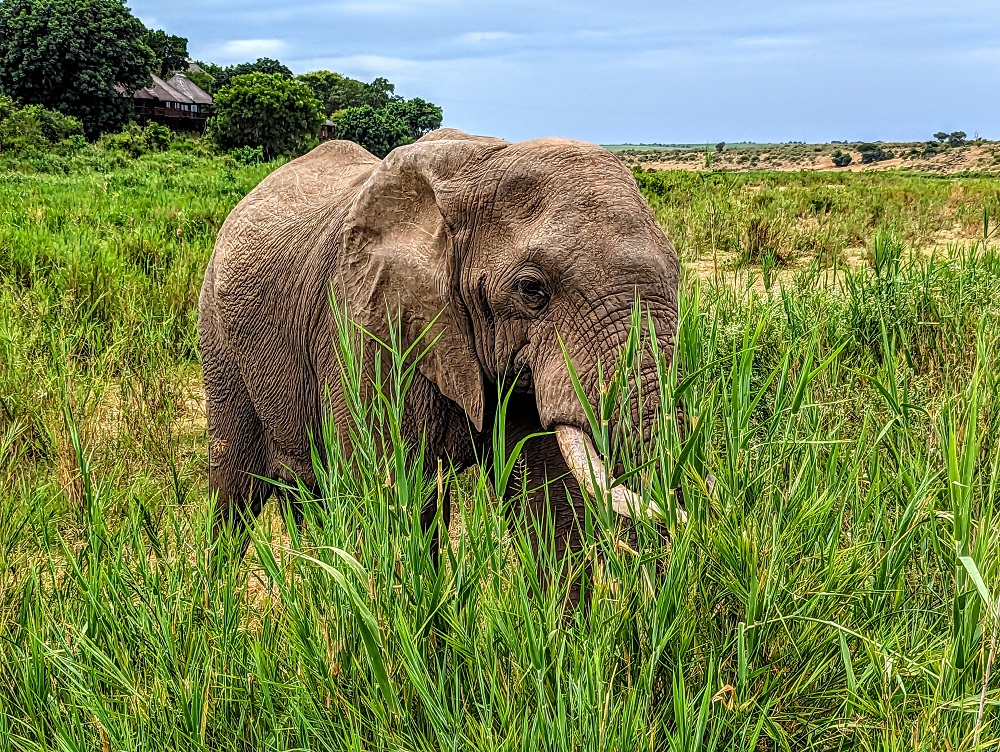
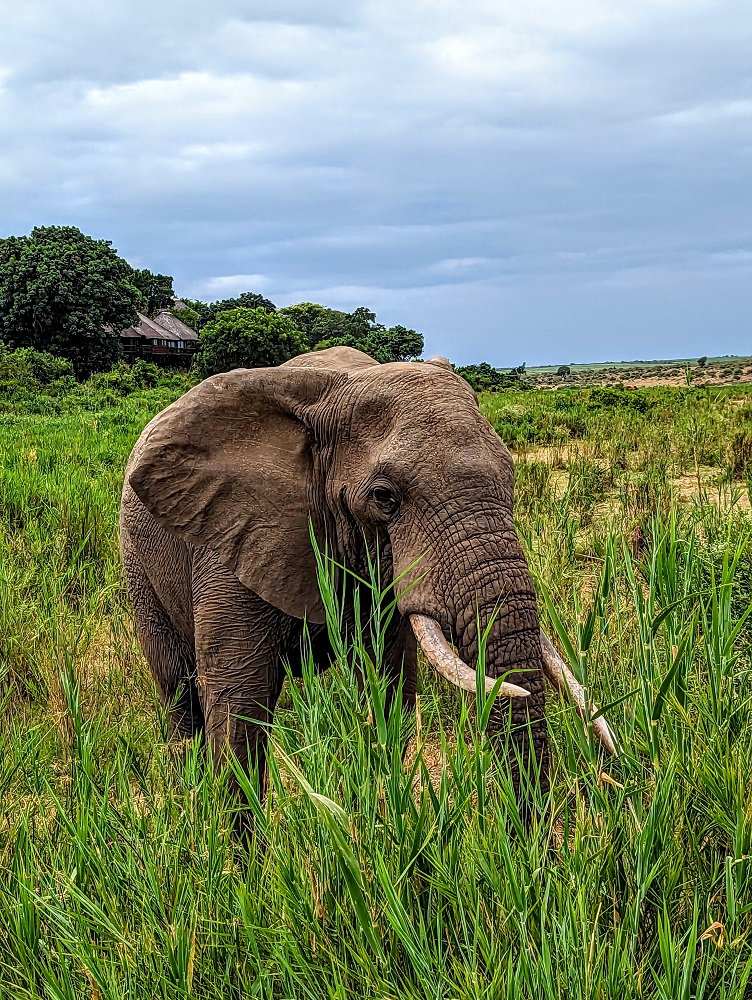
We saw several other elephants around the park. Sometimes they were off in the distance, while other times they were closer but somewhat hidden by trees. This one was nicely placed though.

The next couple of photos were taken of an elephant in the distance using binoculars.

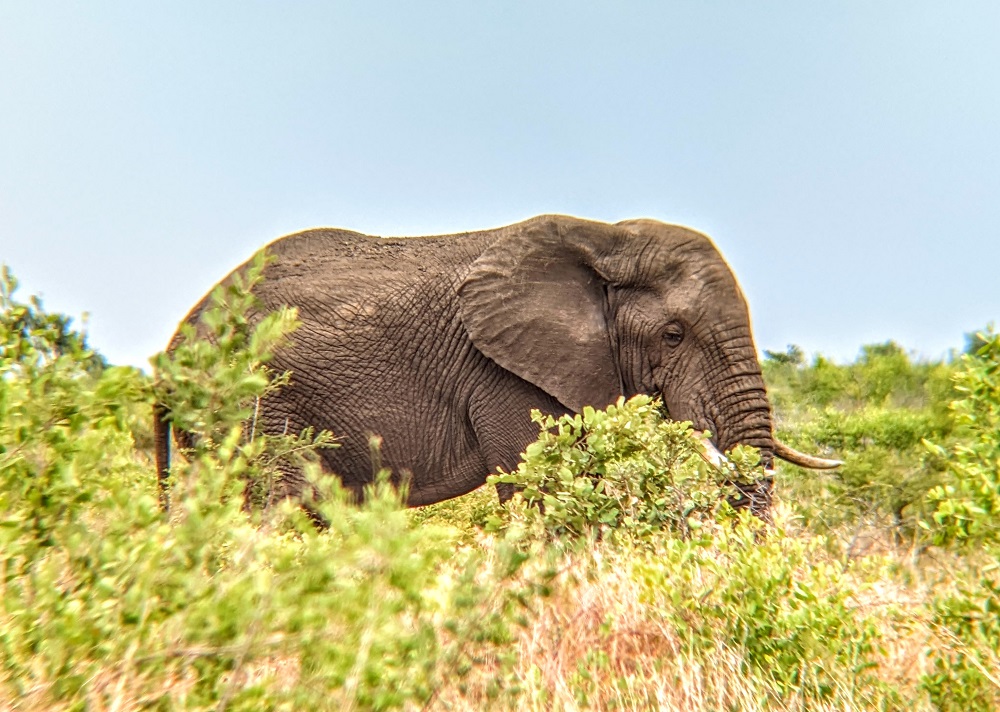
One of the coolest elephant sightings was when we came across a herd of them standing in a circle, seemingly protecting at least one baby elephant among them.
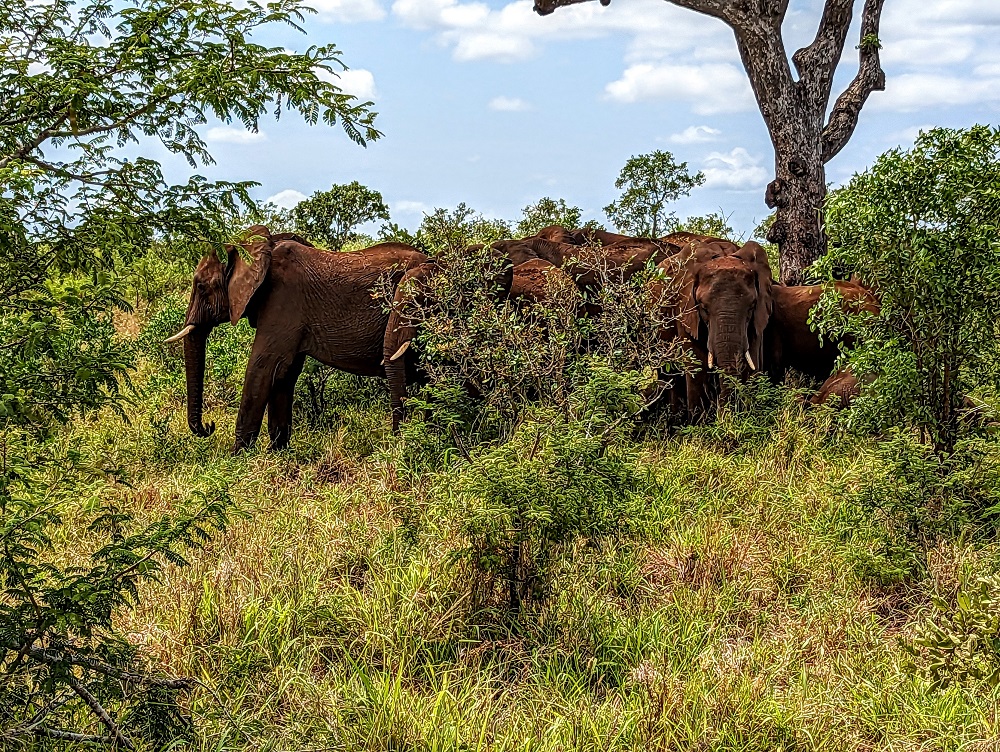
We were able to spot the baby elephant a couple of times and it was super-cute. It can take baby elephants a year or more to get full control of their trunks because for the first 6-8 months of their lives they drink their mother’s milk and so they don’t need to use it. It was therefore funny watching it flail its trunk around like it was a new toy.
Giraffes
I wasn’t expecting this, but my favorite animal that we saw was the giraffe.
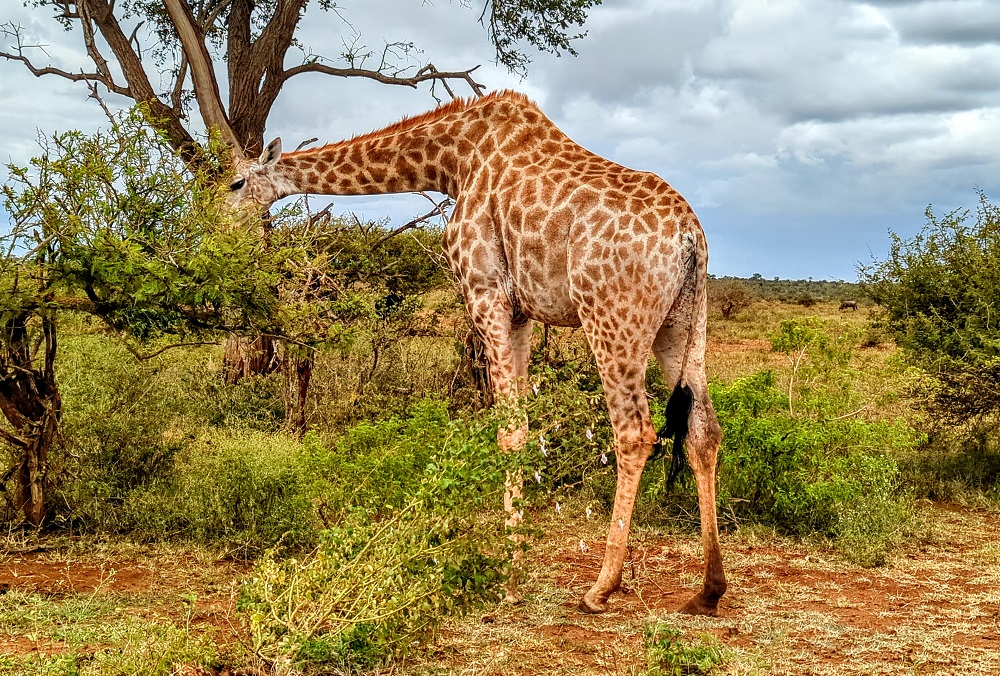
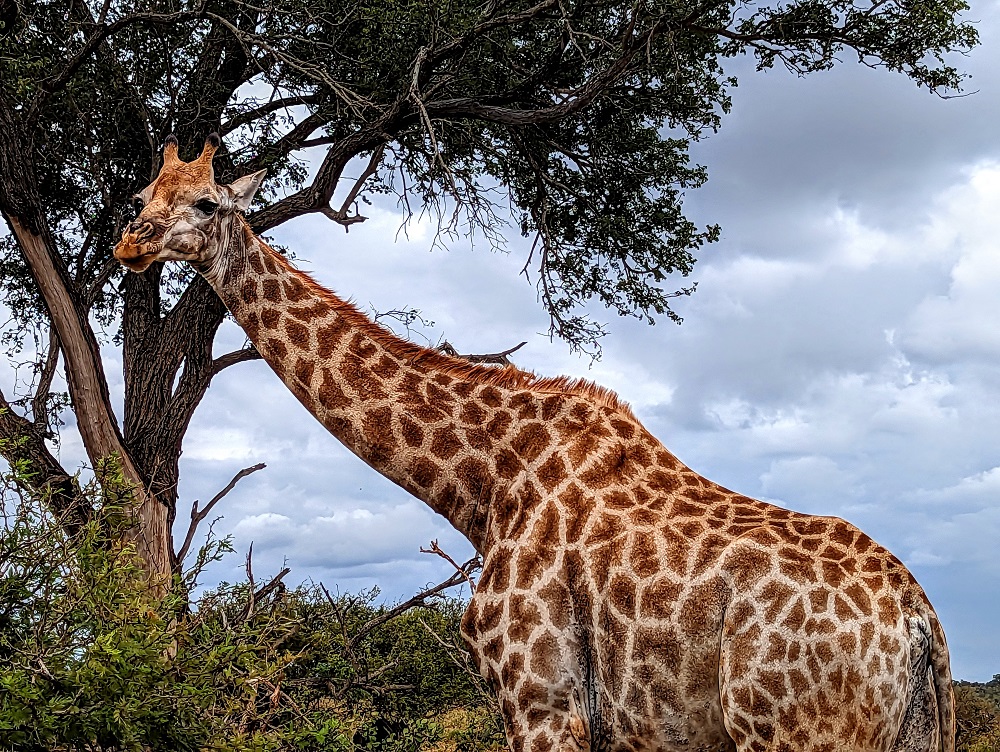
I can’t quite place my finger on why I enjoyed seeing them in the wild so much. Perhaps it’s a mix of the fact that they’re such unique creatures, seem to be chilled most of the time, they’re gentle and they walk elegantly but can run with surprising speed given their size and strange stature.
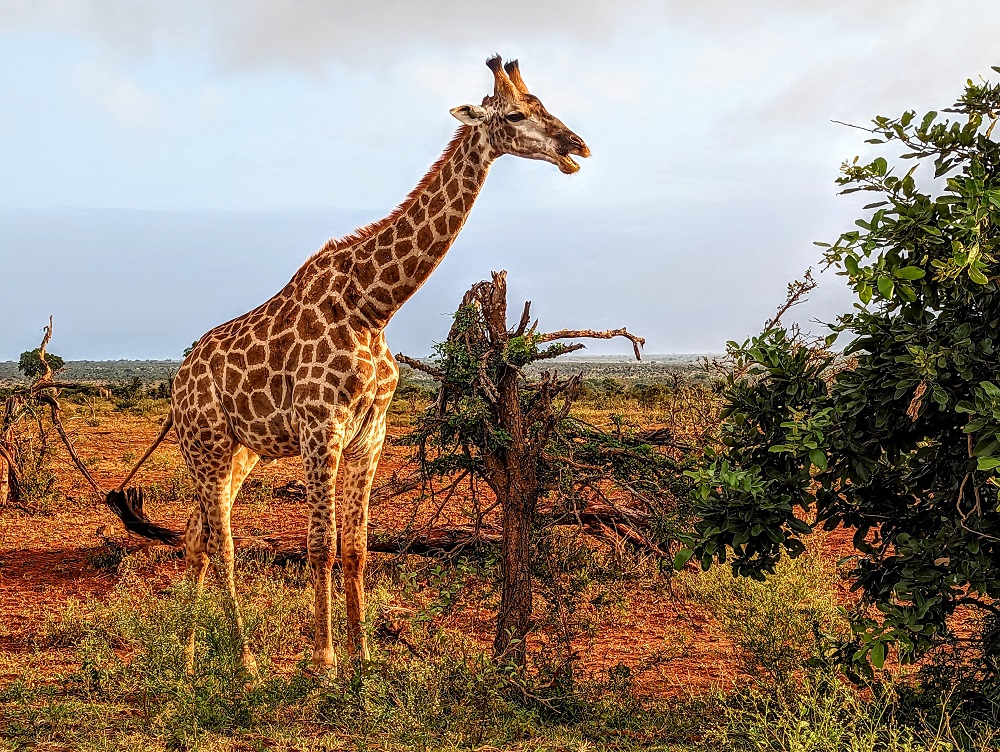
Although we sometimes saw giraffes by themselves, they seemed to be social creatures as we often saw several of them grouped together. There are several different collective nouns for giraffes; my favorite is that a group of them can be called a tower of giraffes.
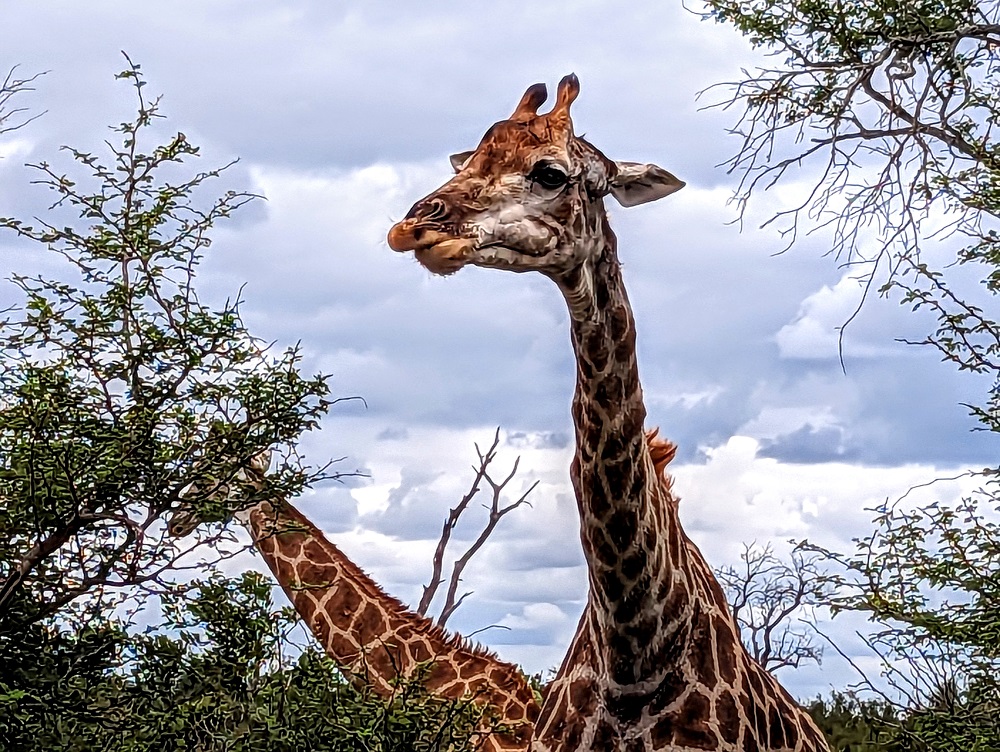
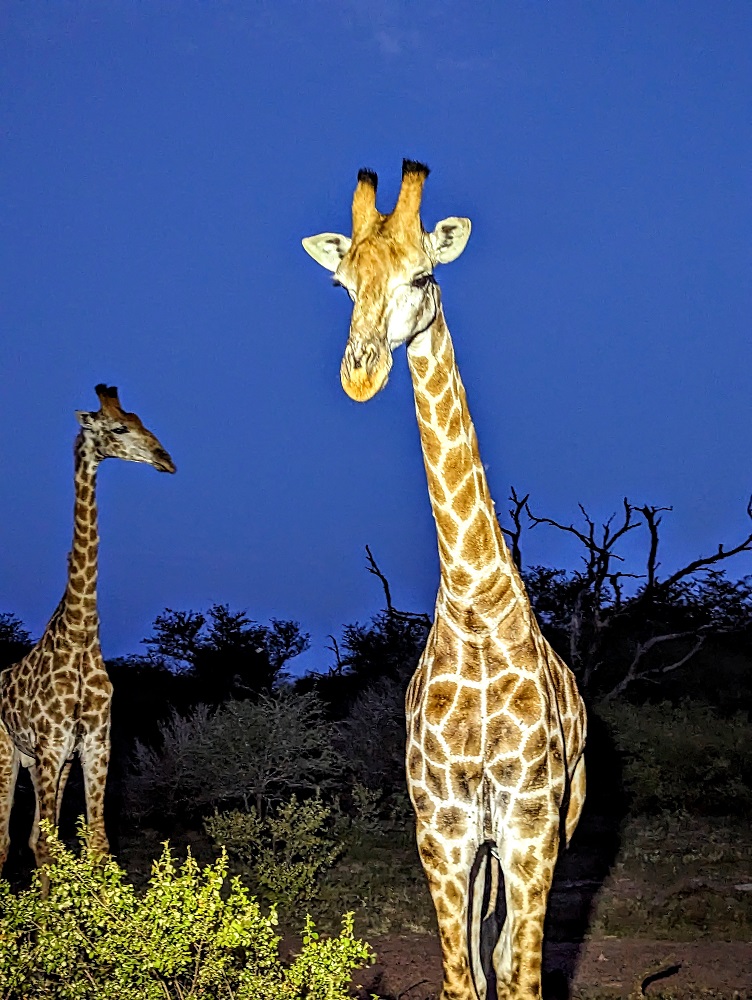
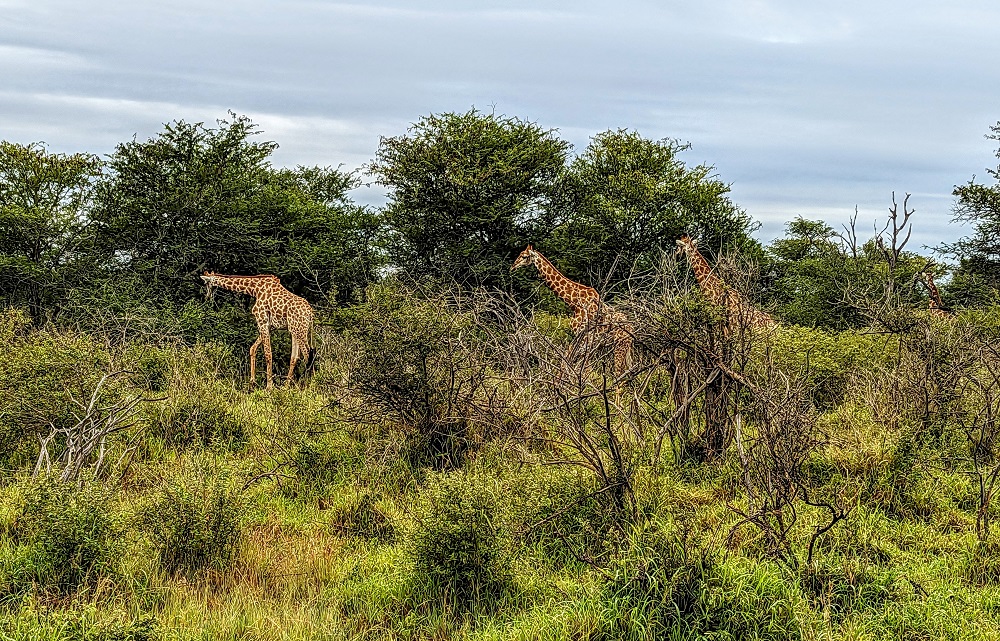
Rhinoceroses
Some of the hardest animals to find in Kruger National Park are rhinoceroses. Poachers are part of the reason for that two-fold. The first is simply due to their poaching which lessens the number of rhinos.
The second reason is that at some entrance gates to Kruger there are signs where people can mark where they’ve spotted different kinds of animals. The exception for that is rhinoceroses because they don’t want to make it easier for poachers to find them.
Despite that, we did find rhinos a few times, although usually at a distance.
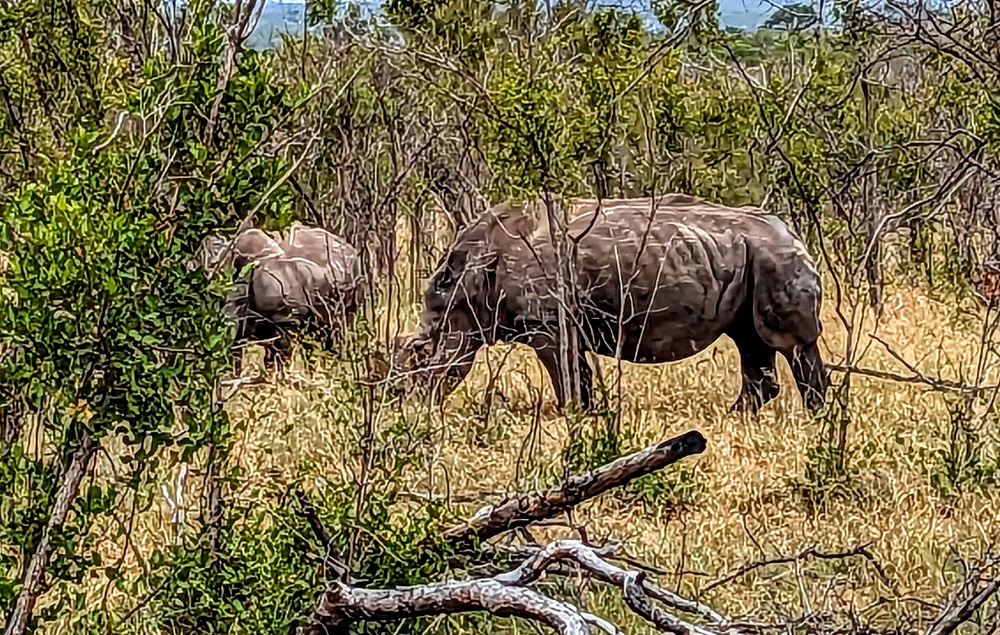
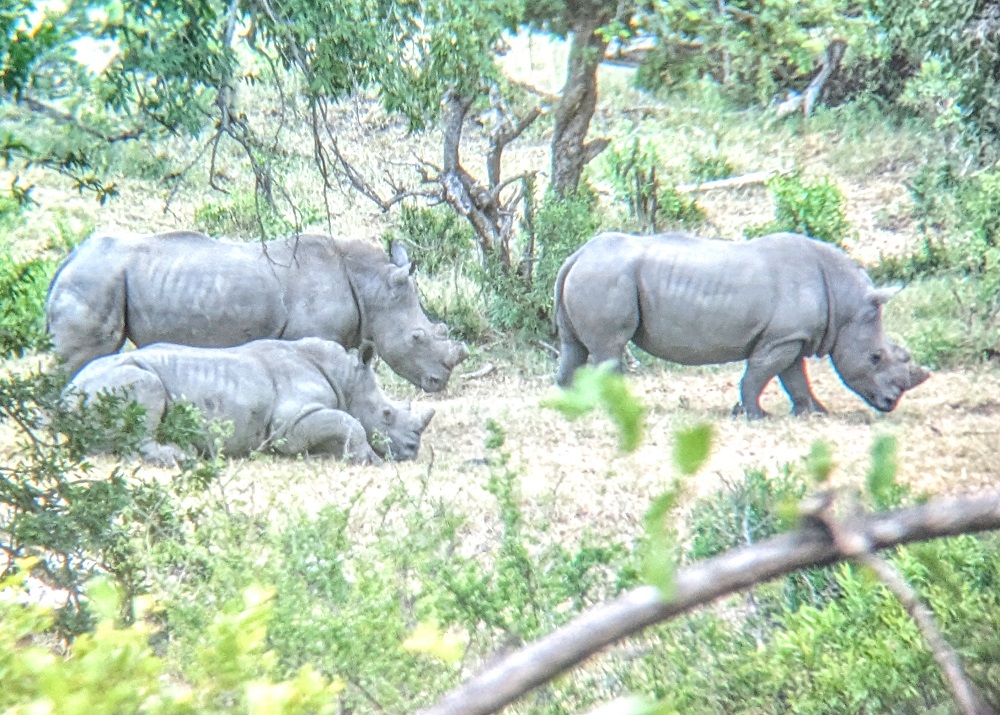
A group of giraffes is a tower which is a great name for them. A group of rhinoceroses has perhaps an even better collective noun – a crash!
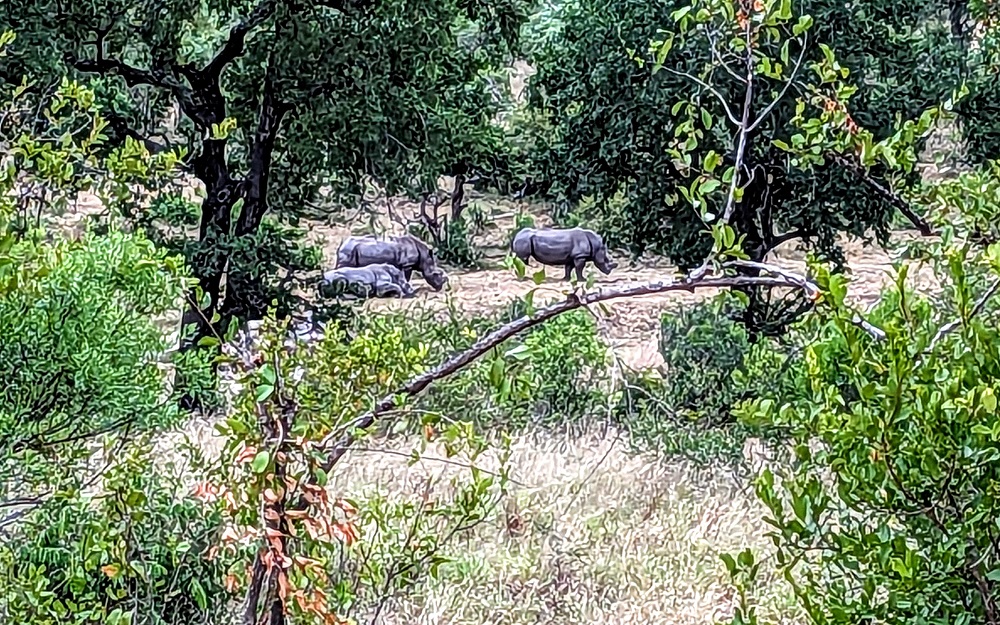
Zebras
Some animals that were more ubiquitous throughout the park were zebras. They weren’t like impala in that they were everywhere you looked, but we didn’t have a hard time finding them.
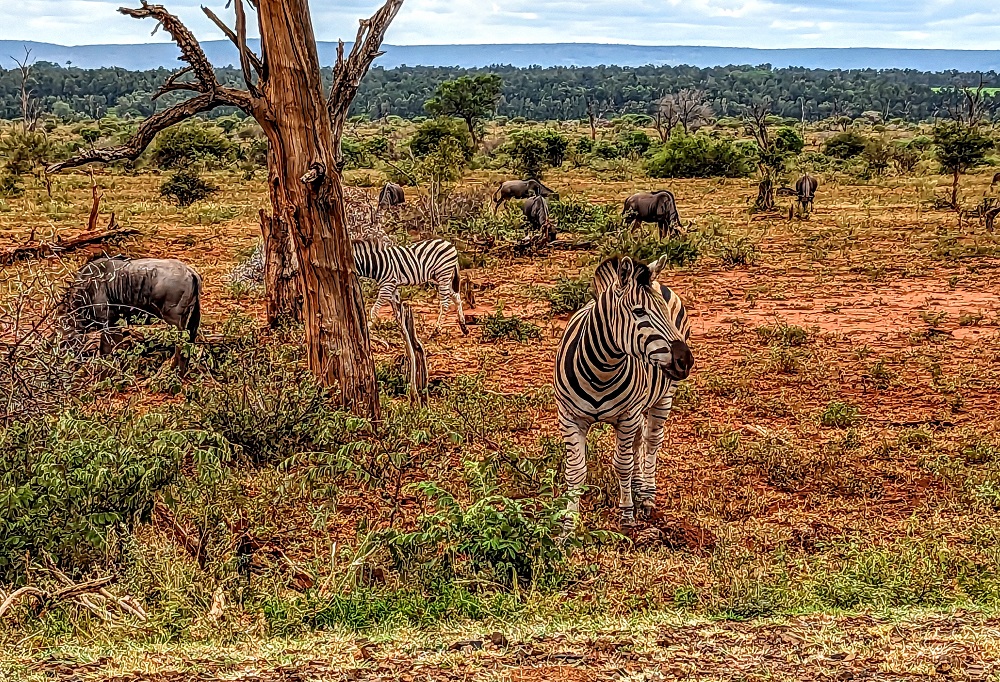
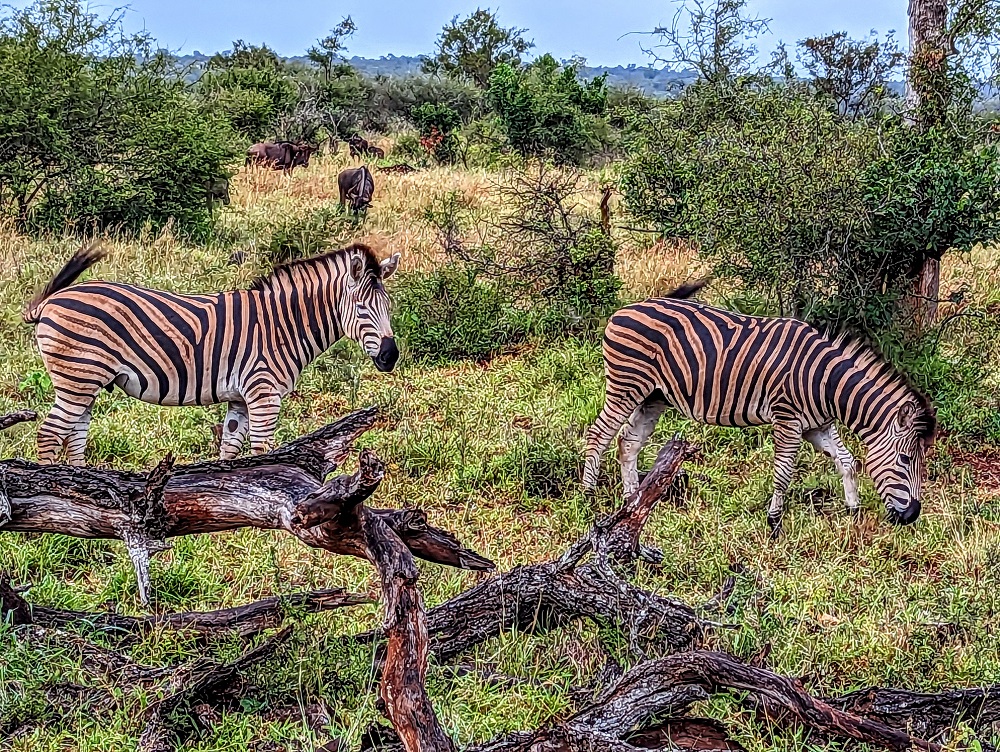
This next photo was one of my favorites because of me being English. In the UK we call crosswalks zebra crossings and this was a real-life zebra crossing.
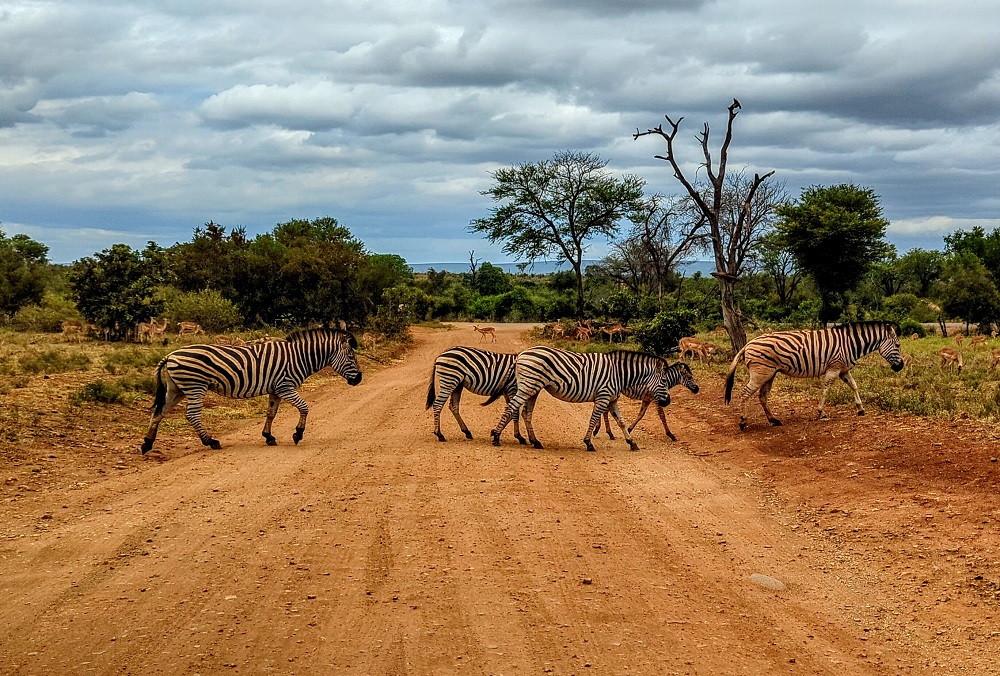
Buffalo
There are five animals known as the Big Five in Kruger National Park – rhinos, elephants, lions, leopards and buffalo. Of those, I’d imagined that buffalo would be the easiest to spot, but we didn’t come across as many as I’d expected. We did see more buffalo than any of the other Big Five animals, but that’s more due to the fact that when we did see them they’d be in a big herd.
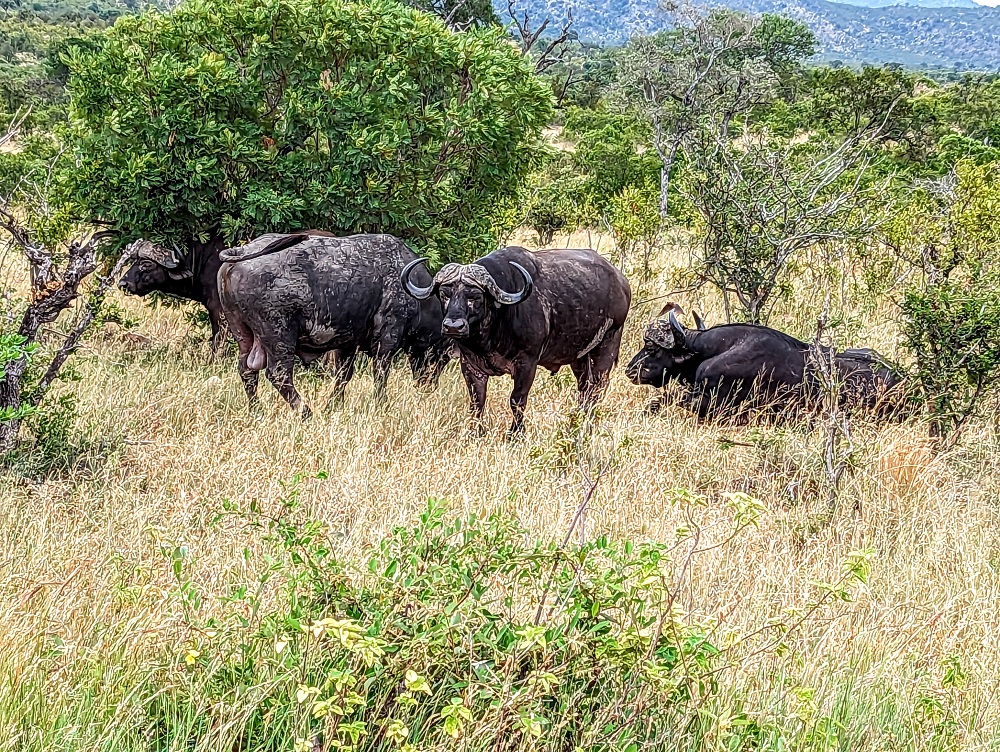
They aren’t the happiest of looking animals as they sometimes have a very serious look on their face.
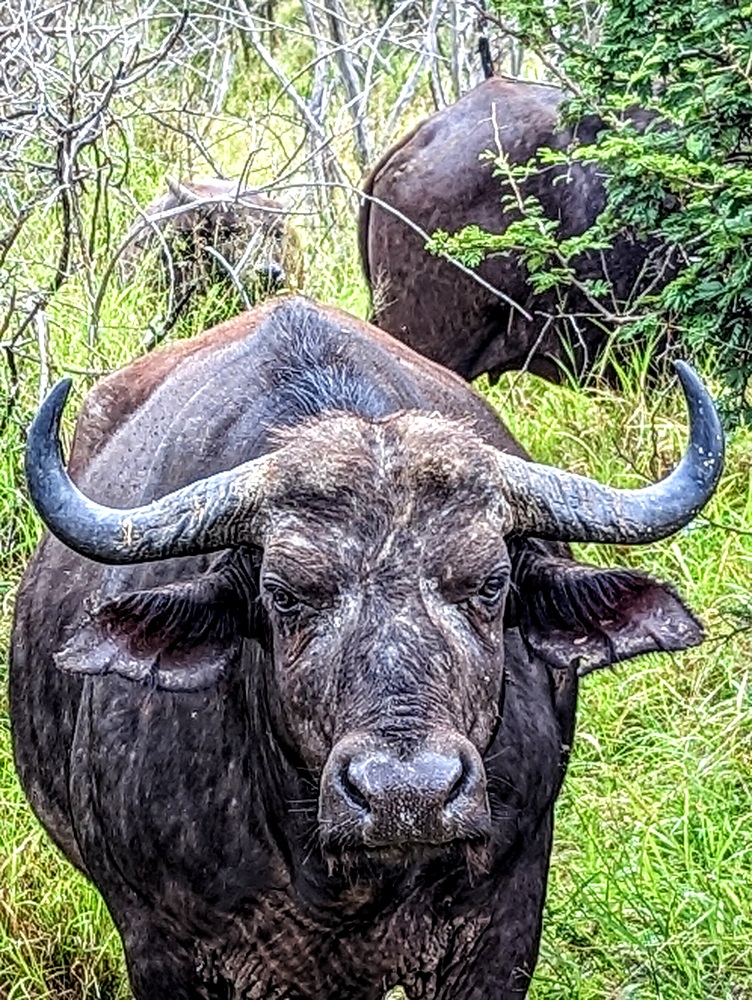
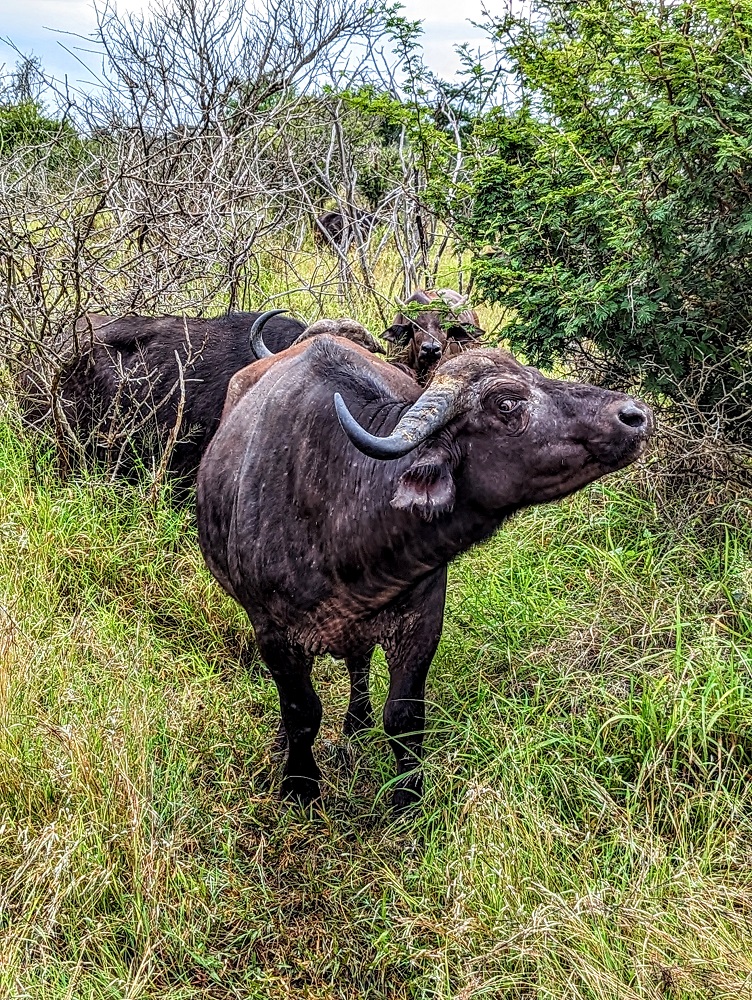
We visited Kruger National Park at the end of January/beginning of February which was a great time to visit because many different animals there had recently had babies.

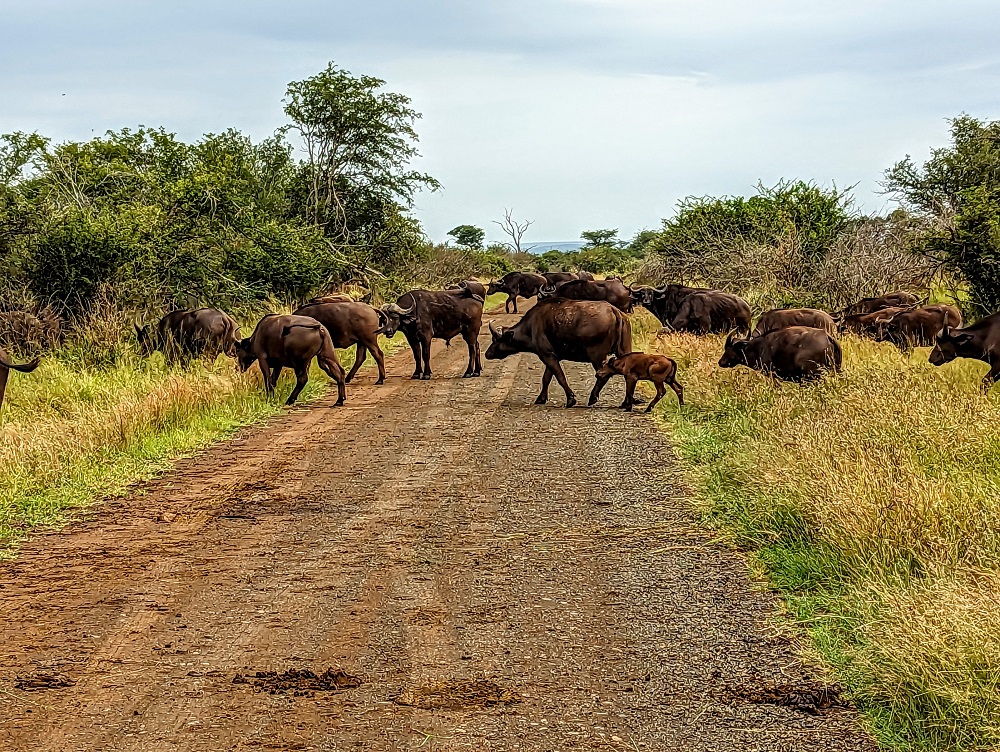
Lions
Another of the Big Five animals were lions. They were harder to find, but when we did see them we were fortunate enough to see several of them together.
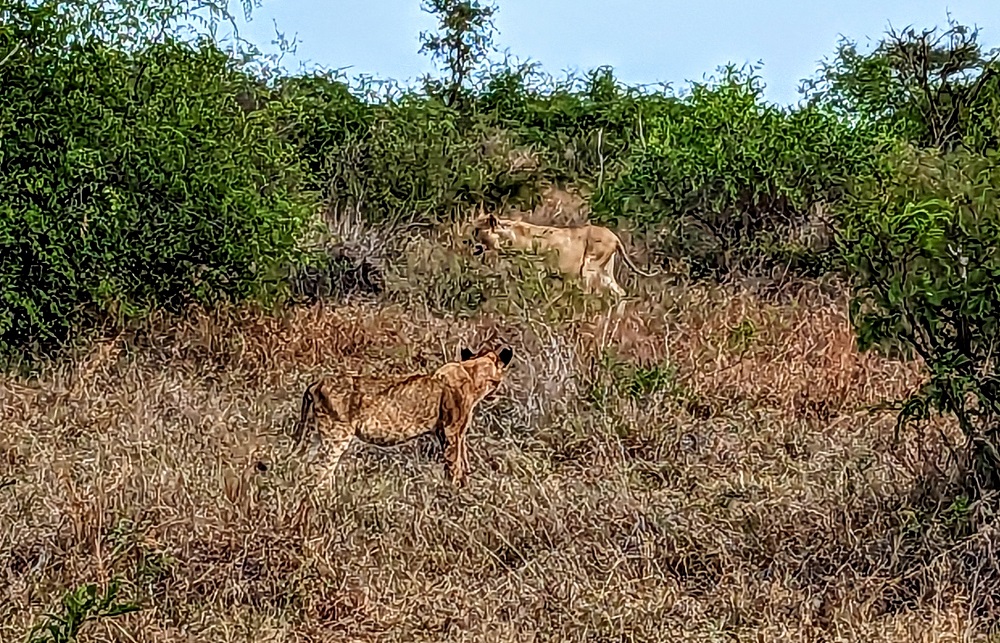
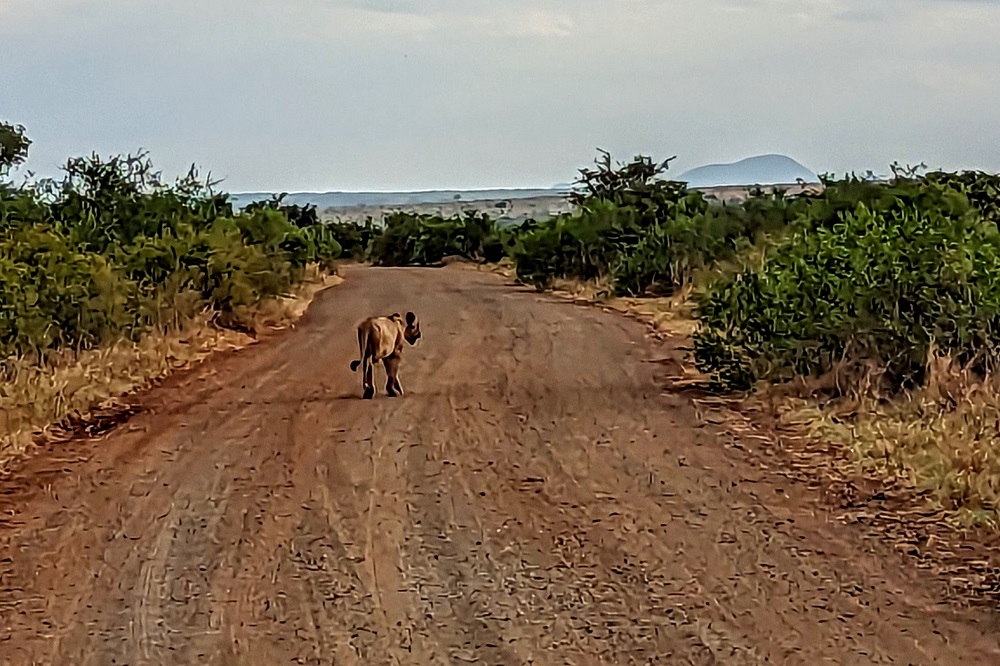
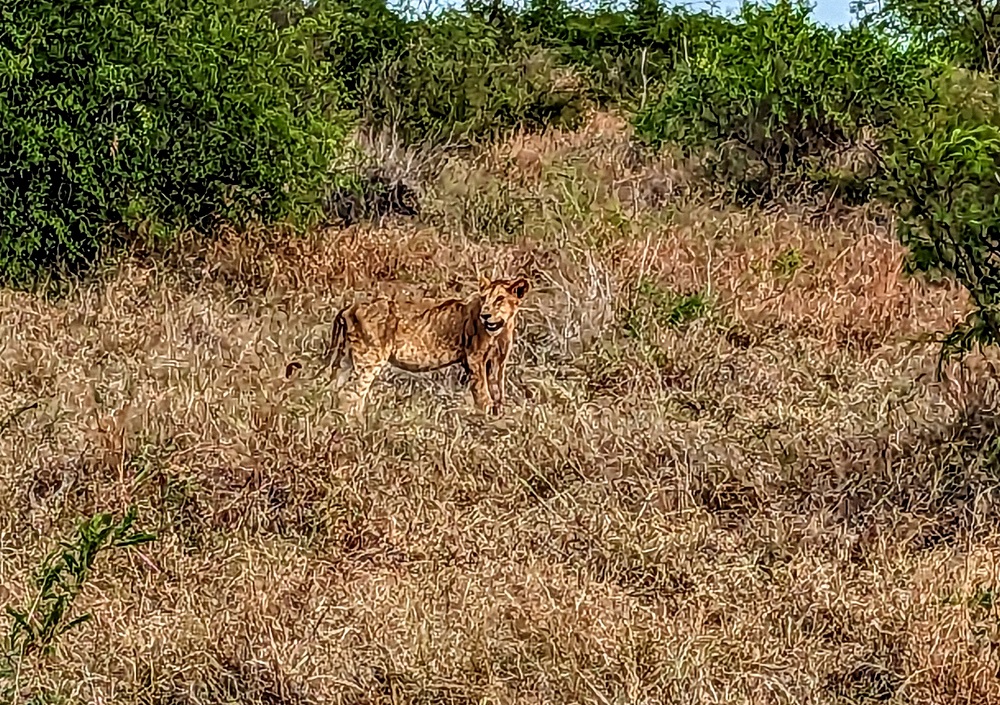
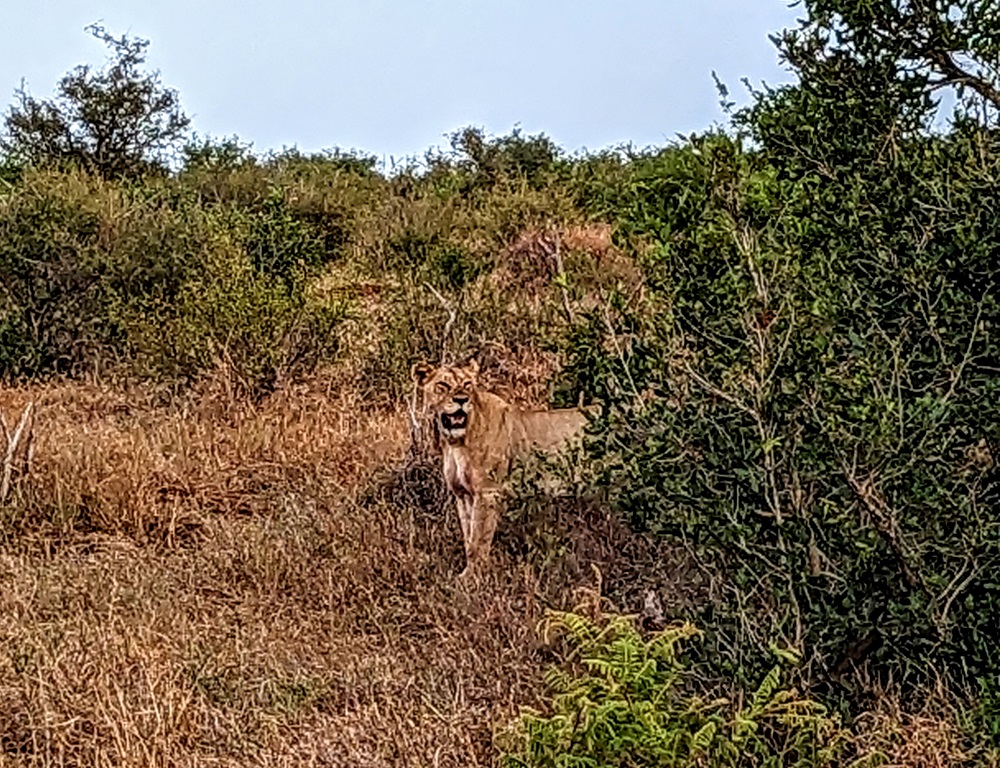

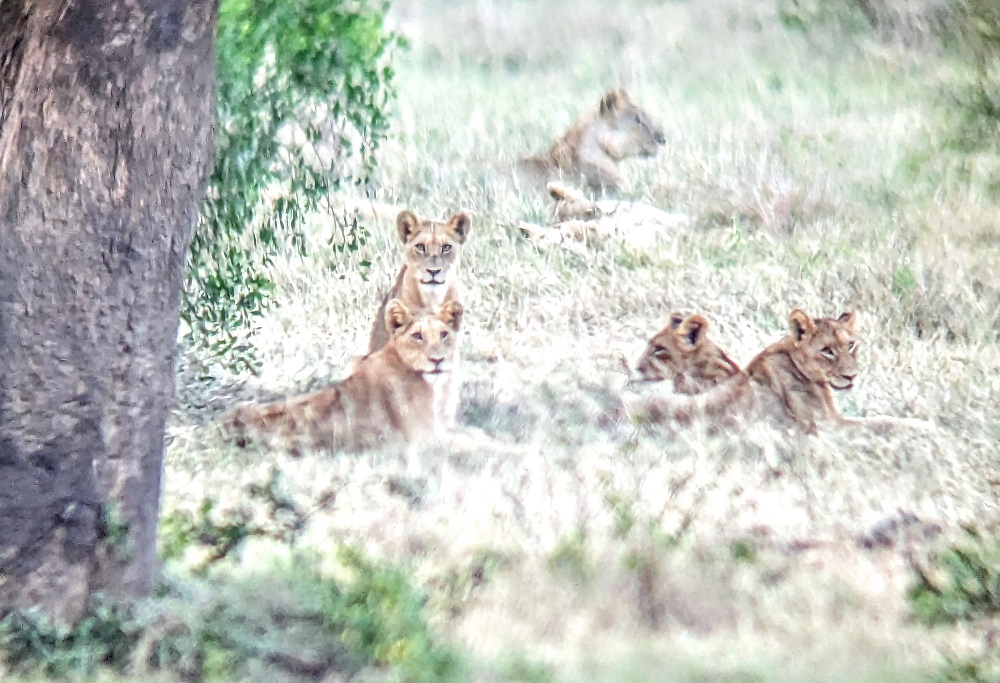
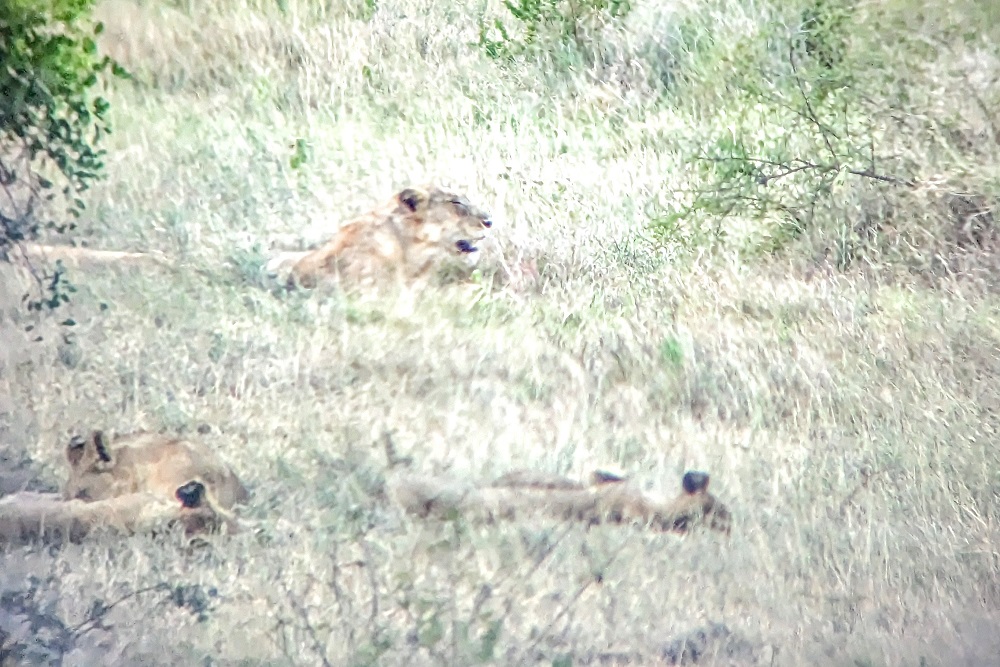
Hippopotamuses
Another kind of animal that was harder to see was the hippopotamus. We often saw them, but very little of them because they were usually mostly submerged in water.

Fun facts – hippos can’t swim, they don’t float, nor can they breathe underwater. Instead, they simply walk along the river bed when in the water.
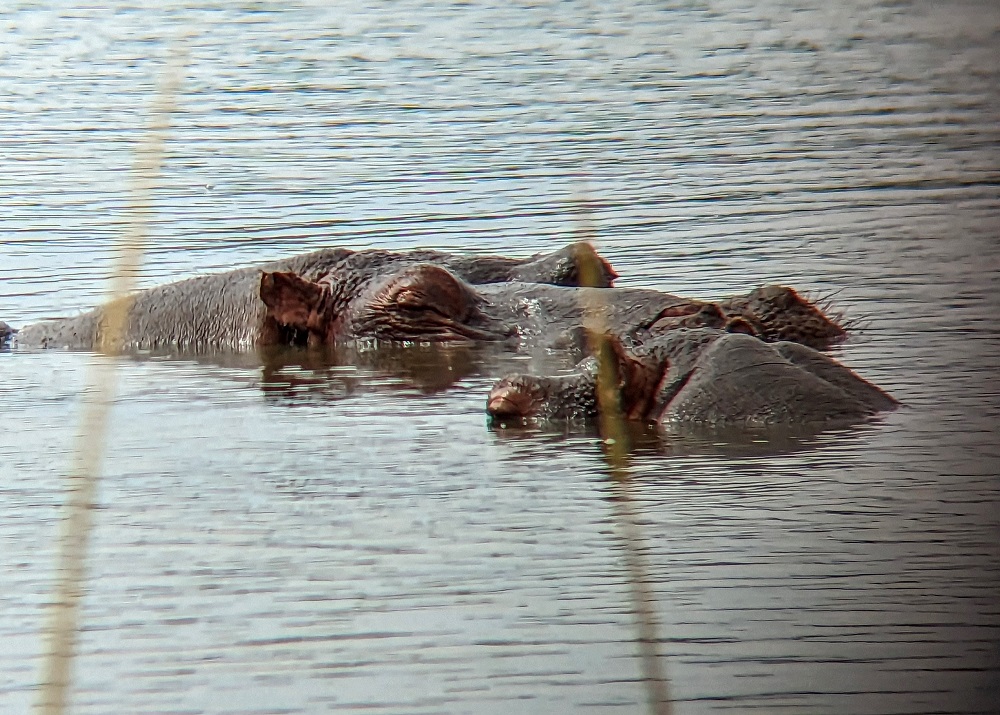
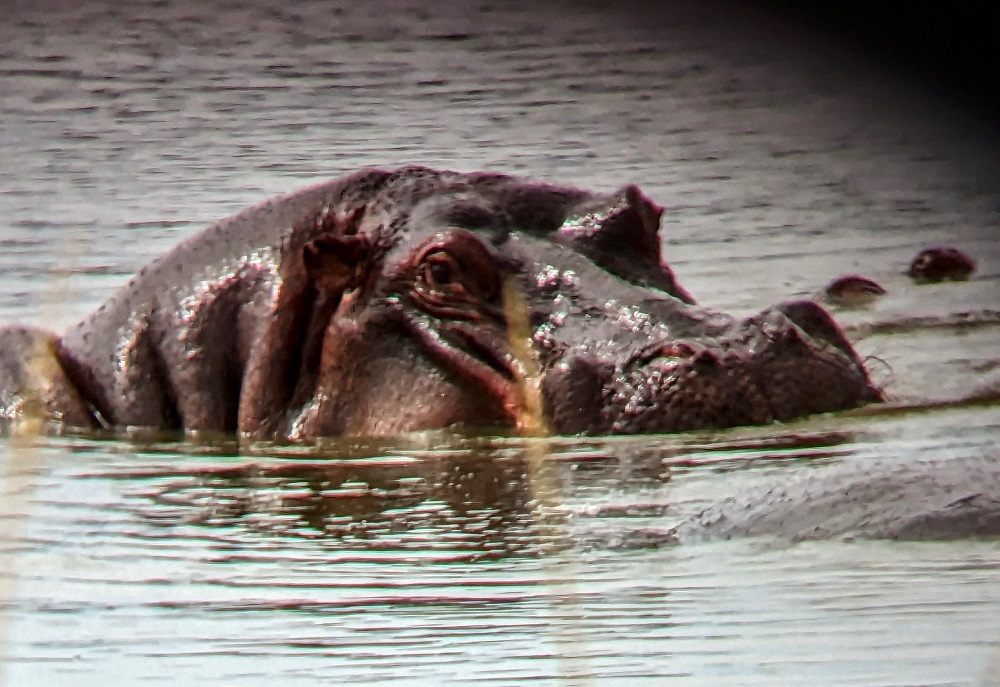
There were a few occasions where we saw hippos out of the water though.
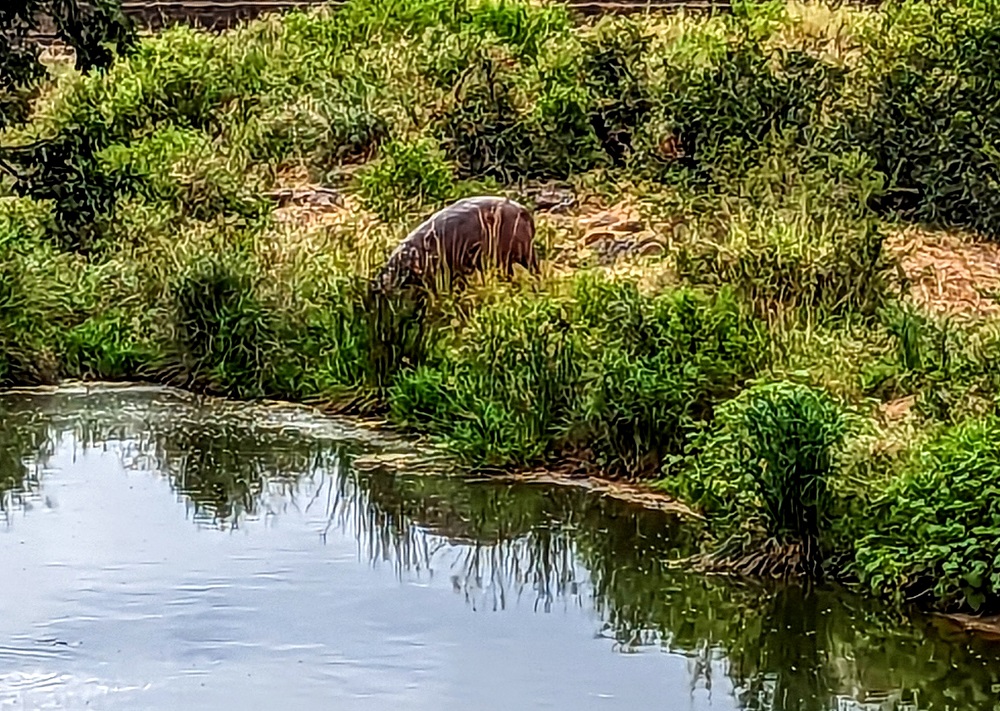
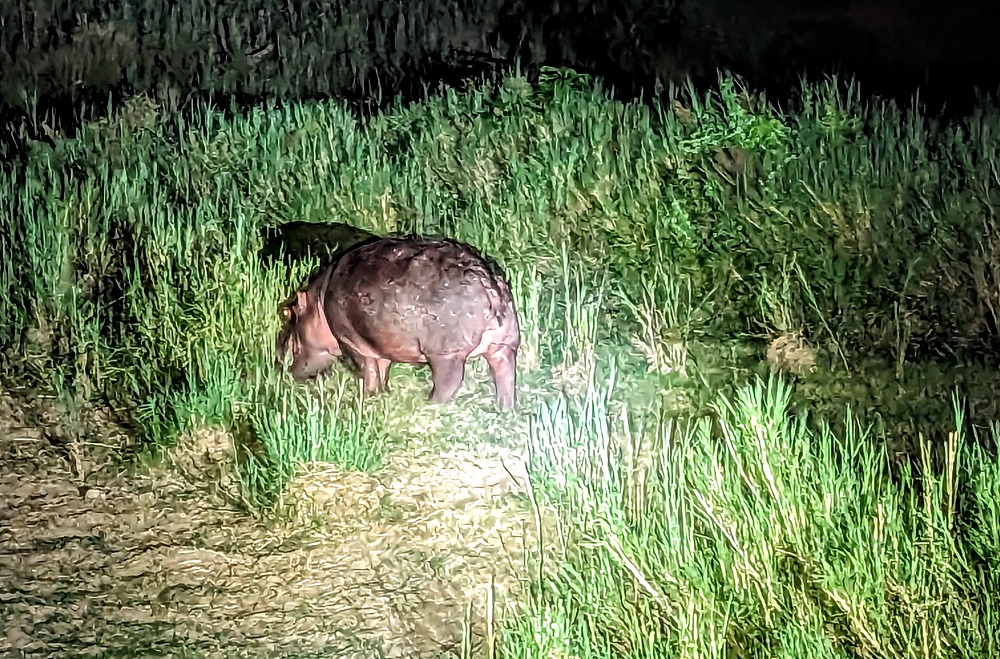
Wildebeest
One of the most common animals we saw in Kruger National Park were wildebeest.

Due to the time of year, we also got to see quite a few baby wildebeest.
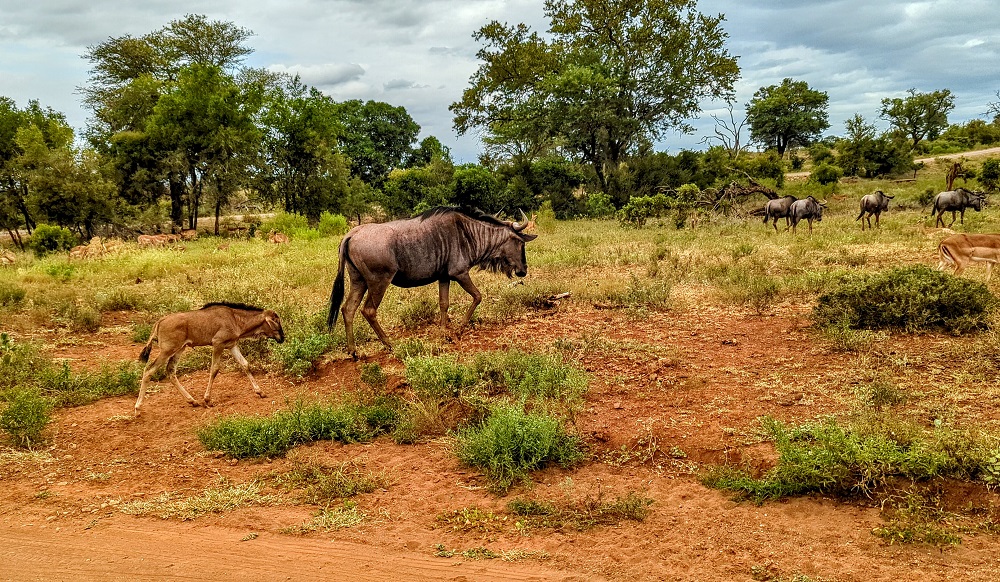
Impala
The animals we saw most frequently were impala – a kind of antelope. They were very much deer-like and were incredibly cute.
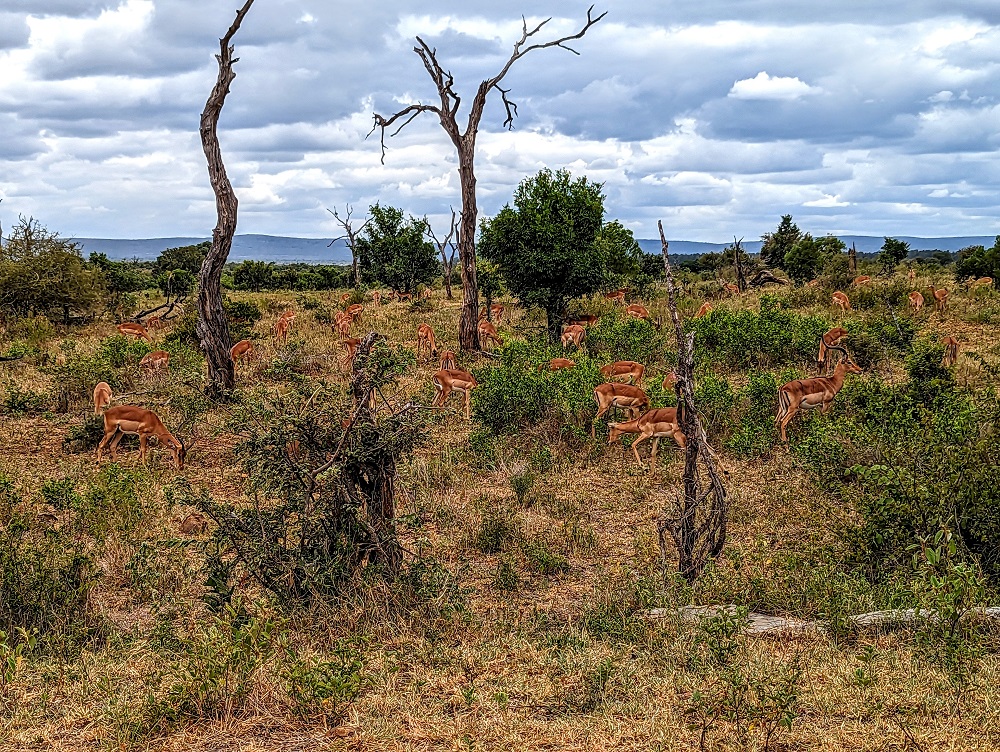
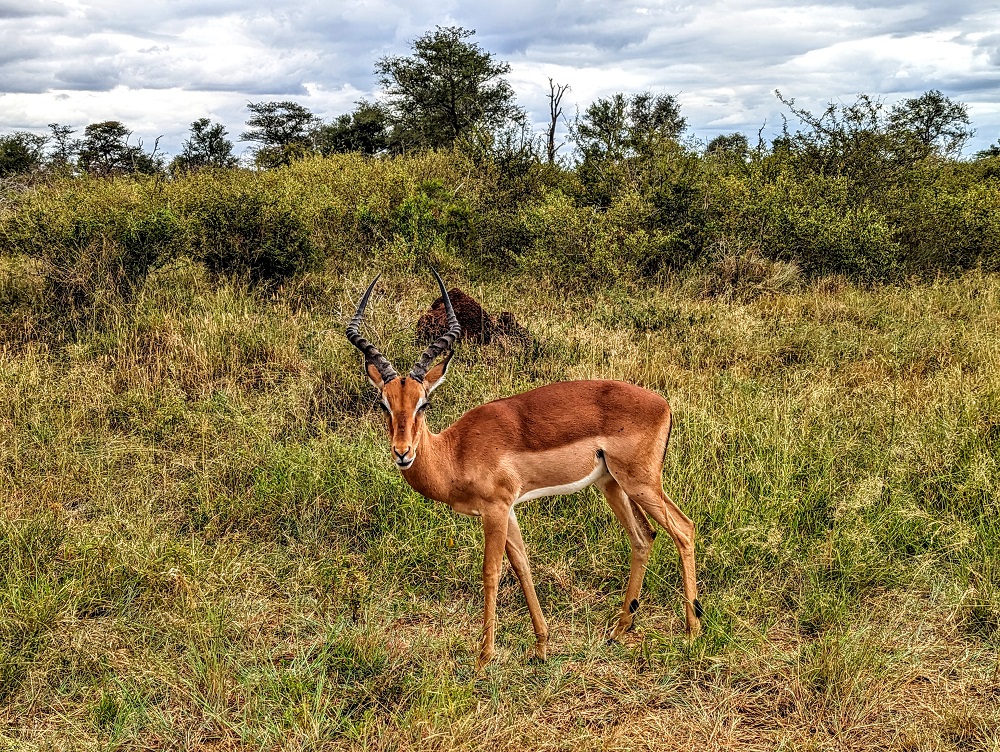
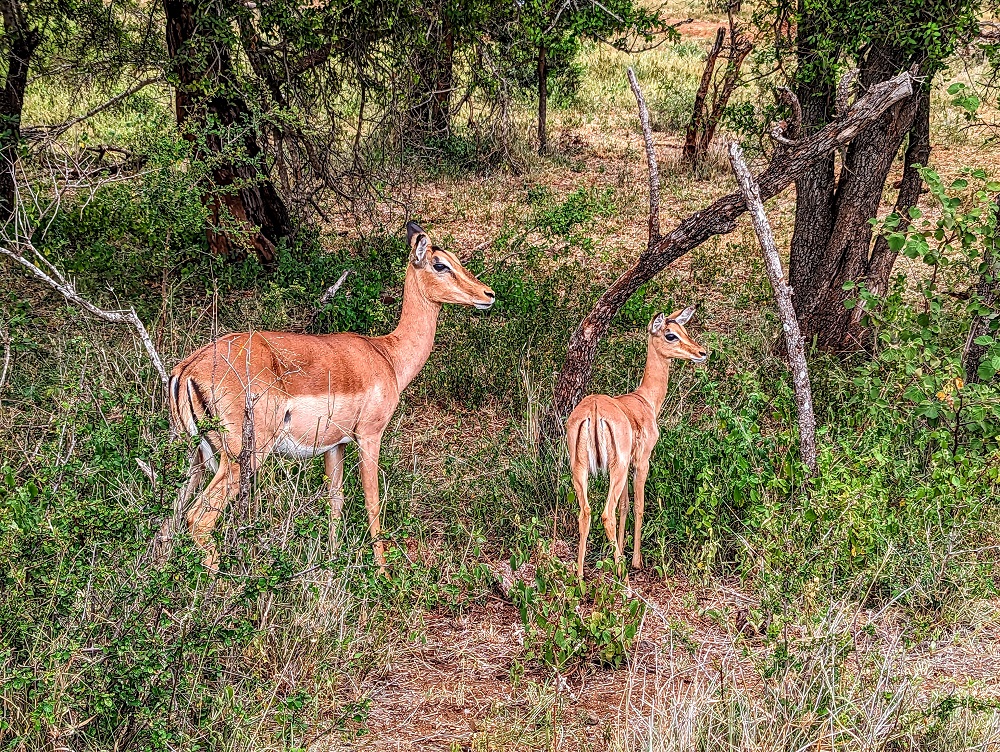
Hyenas
We saw hyenas a few times, although usually at a distance and so it was hard to get photos of them. This one decided to cross the road in front of us at nighttime though which gave us time to take a photo.
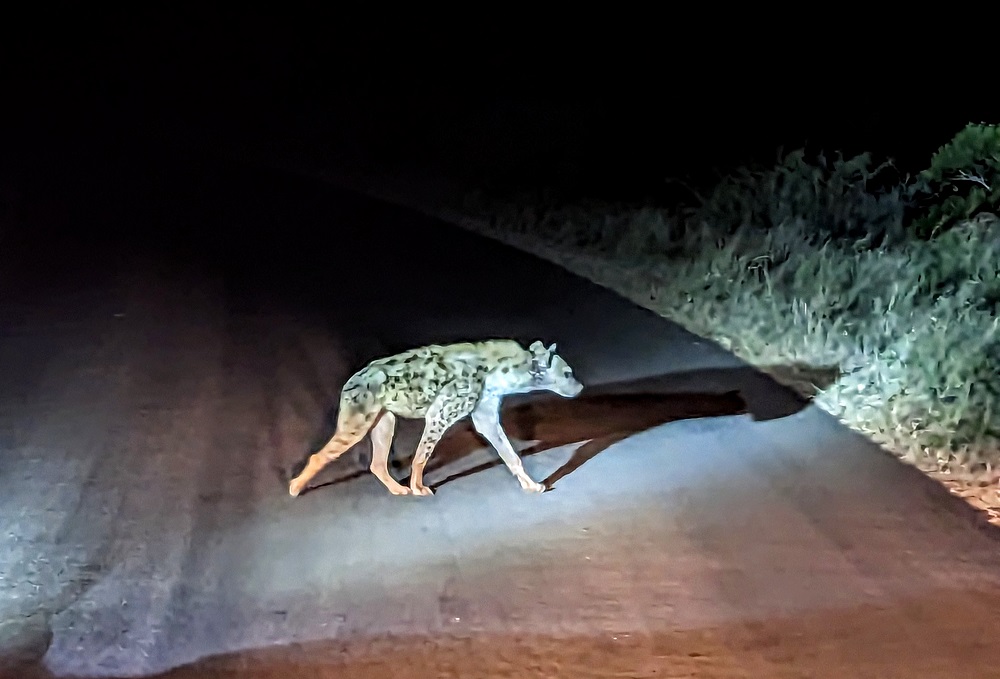
Cheetah
Although we mostly did self-drive safaris, we did end up paying for a couple of reasonably-priced guided safaris. That ended up being a great choice because it was during one of those that our guide was radioed by another guide to give us a heads up about a cheetah sighting.
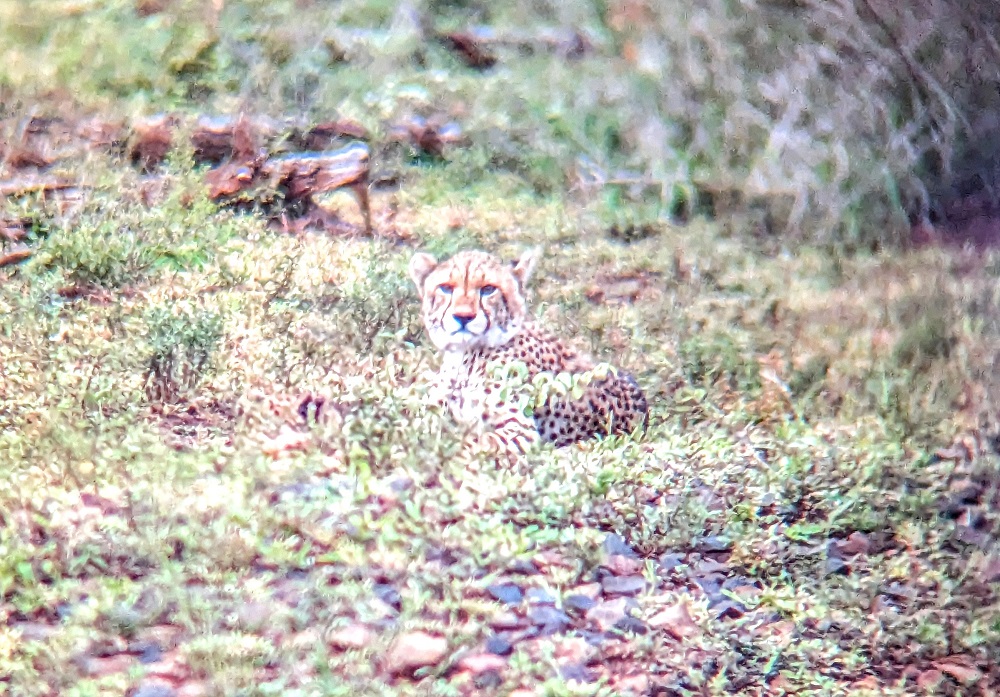
Vulture
We sometimes saw vultures circling in the sky when there had been a kill, but also saw them hanging out together in trees – the collective noun for which is a committee of vultures.
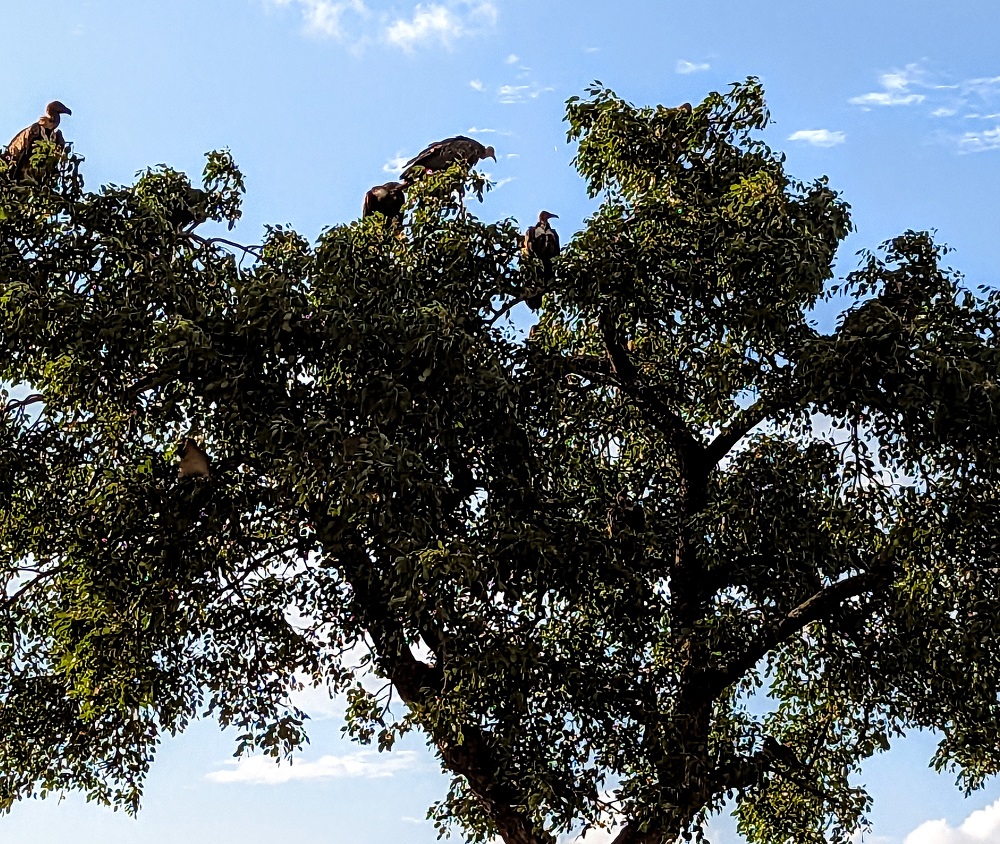
Leopard Tortoise
In addition to the Big Five, there’s also a group called the Small Five. They’re animals and insects whose names include the Big Five animal names – elephant shrews, rhino beetles, ant lions and buffalo weavers. The fifth of the Small Five is the Leopard Tortoise.
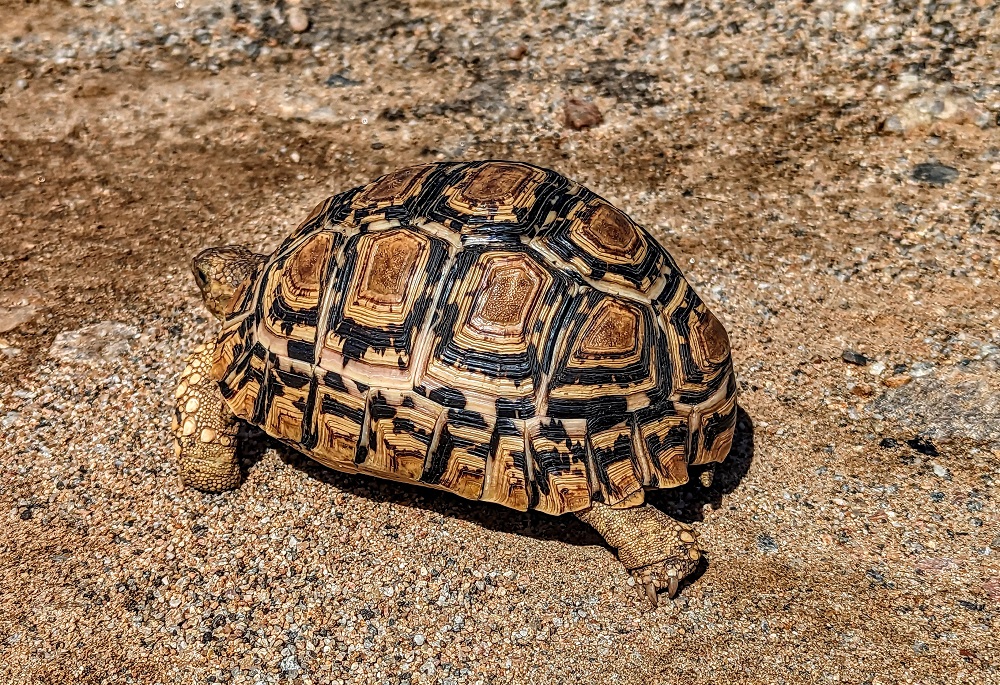
African Red-Billed Hornbill
If you’ve watched The Lion King, you’ll recognize this bird. Its name in the movie is Zazu and it’s an African red-billed hornbill. We saw quite a few of them, but they were hard to take photos of because they’re fairly small and always seemed to be moving.
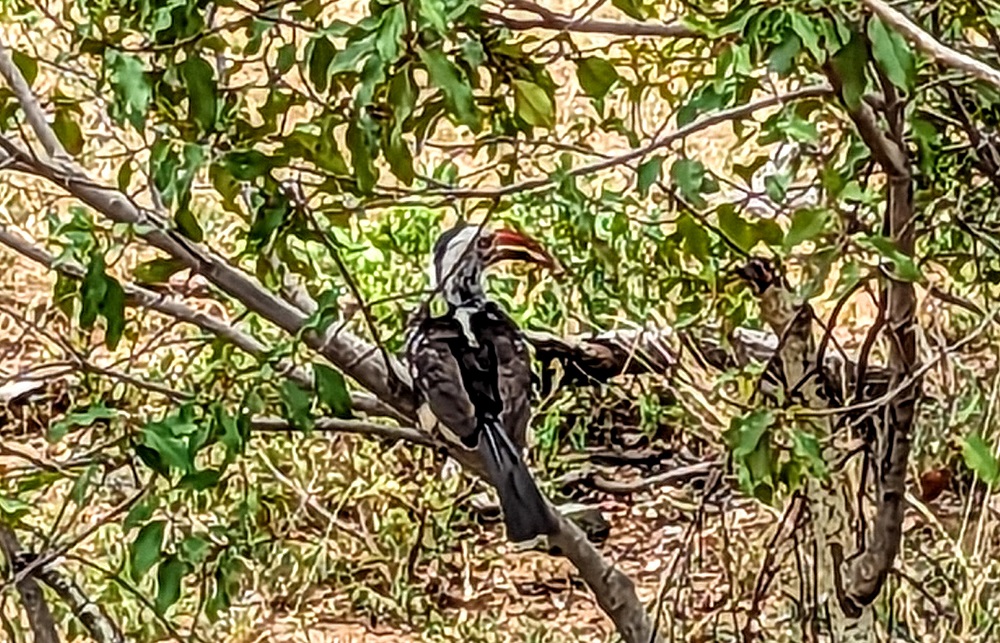
Ostrich
We only saw one ostrich during our multiple drives around Kruger, but it sounds like we got lucky because our guide that day said that it was the first time he’d seen an ostrich in years.
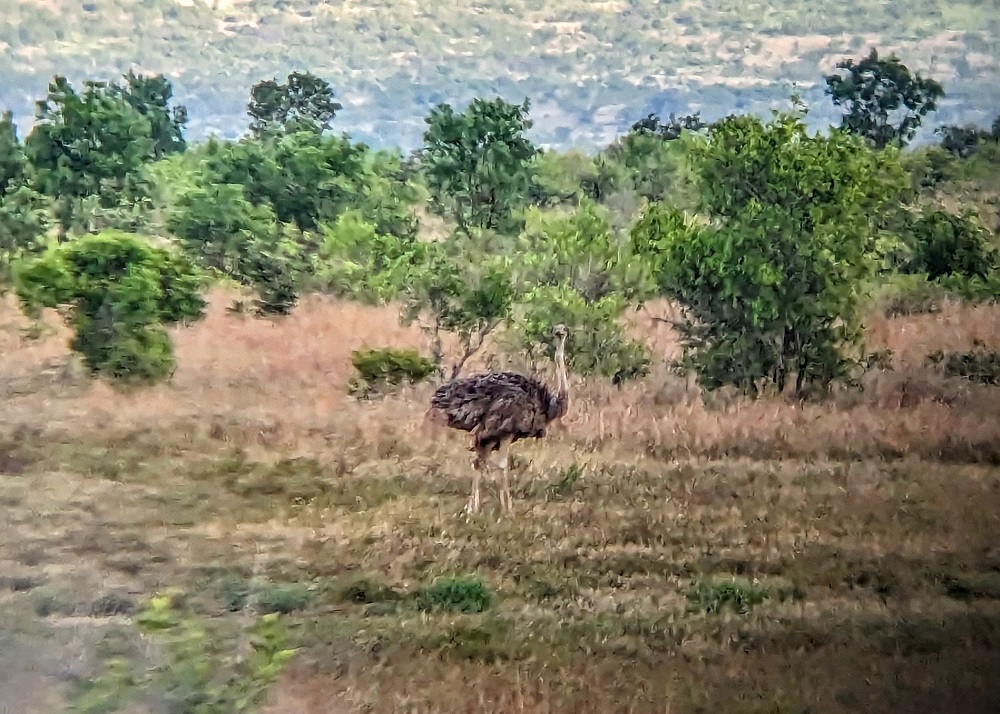
Millipede
A creature that was larger than I’d expected was the millipede. I’d imagined they’d be a similar size to centipedes, but they were much larger.
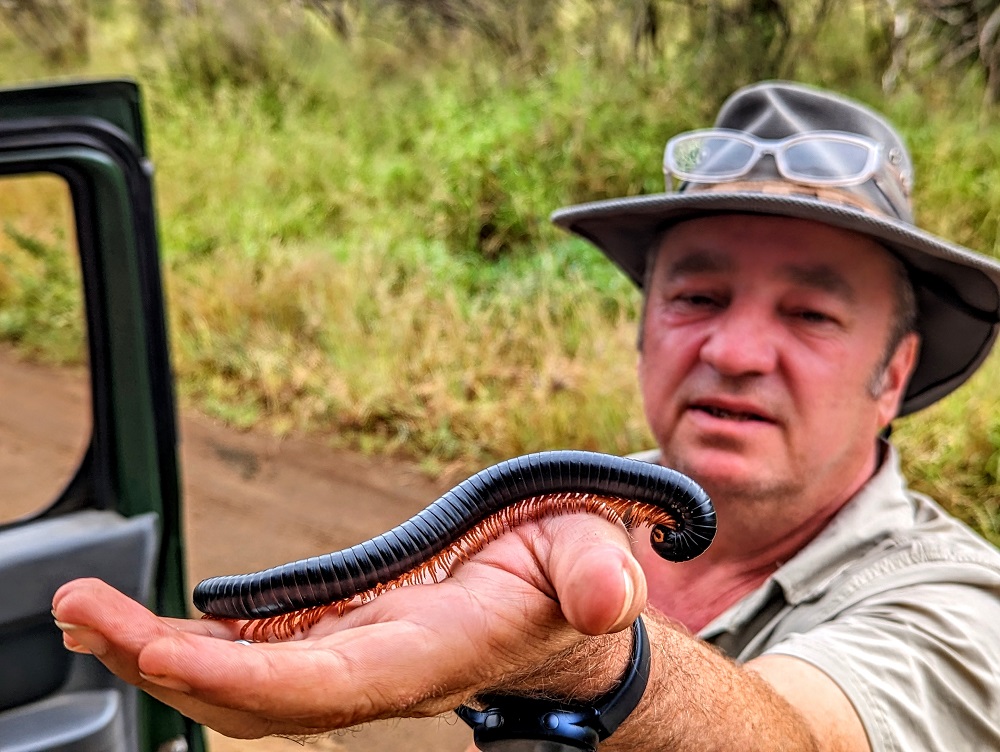
Chameleon
Other than a dung beetle, I think the smallest creature we saw was a baby chameleon. We still have no idea how our guide spotted it; we were driving back after dinner and he somehow managed to see it in the dark while it was sitting on a branch off to the side of the road.
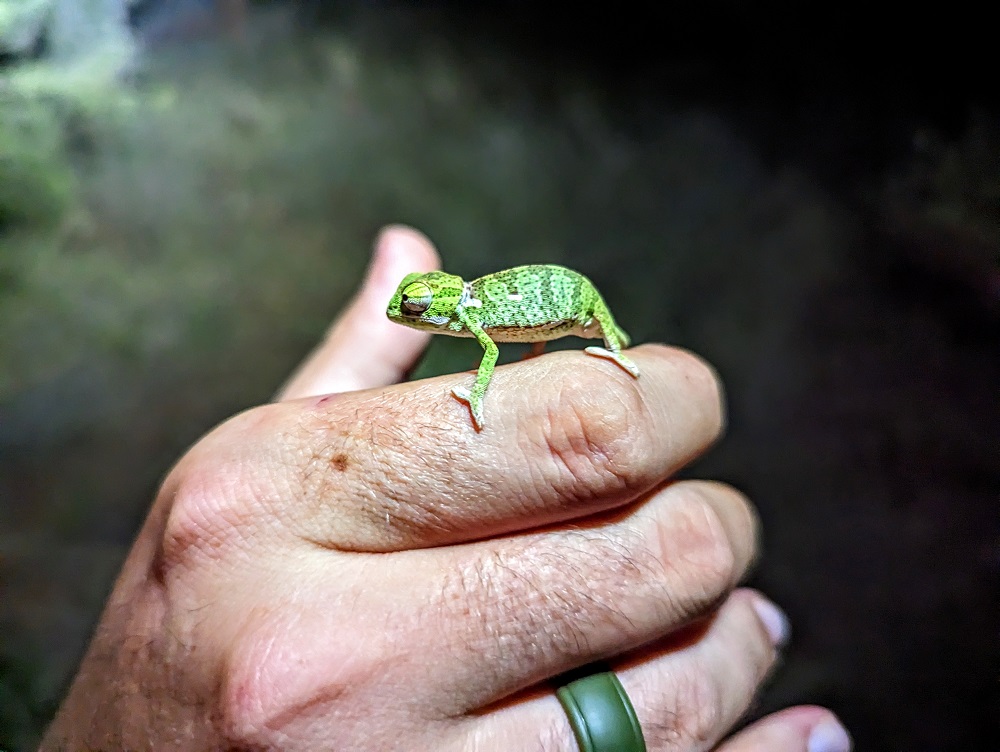
Monkey
We saw more monkeys while driving through Marloth Park than in Kruger National Park itself, but we did see a few of them in Kruger.
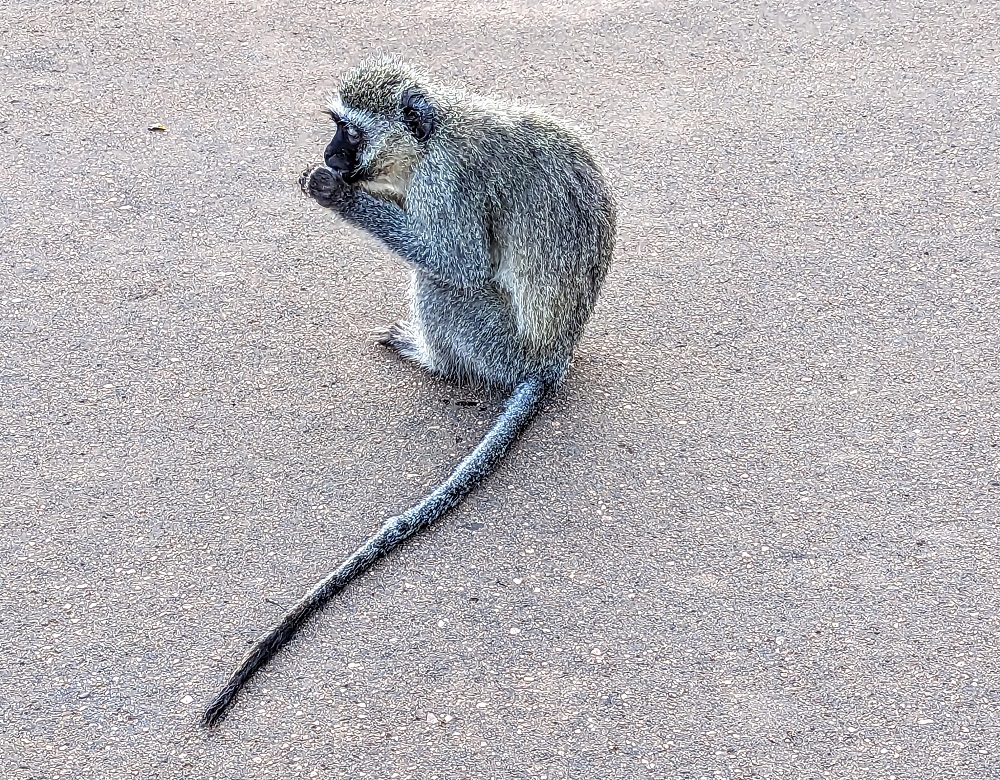
Greater Blue-Eared Starling
Kruger has all kinds of interesting birds, so it’s a popular place for ornithologists to visit. One of the best-looking and most vibrantly-colored birds we saw was the greater blue-eared starling.
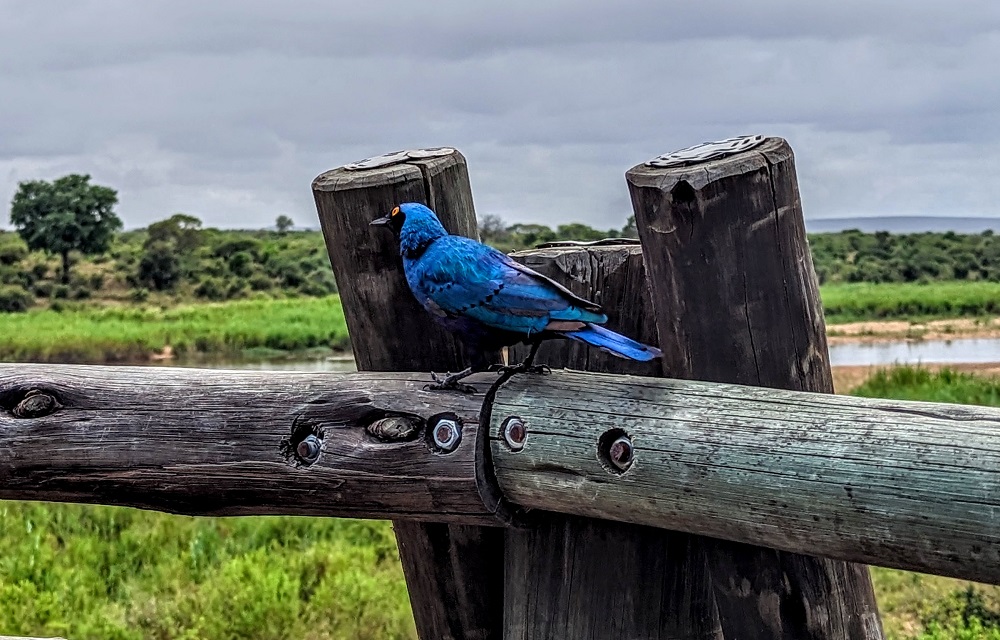
See All Posts From This International Trip
- Lions & Quokkas & Scorpions, Oh My: A Month In Australia, South Africa & More
- We Were Denied Boarding To Australia – Here’s Why
- Flight Review: Lufthansa Business Class – Dallas-Fort Worth (DFW) To Frankfurt (FRA)
- Flight Review: Eurowings Discover Business Class – Frankfurt (FRA) To Mauritius (MRU)
- Some Thoughts On Mauritius
- Hotel Review: Hilton Mauritius Resort & Spa
- Hotel Review: Le Méridien Ile Maurice (Mauritius)
- Restaurant Review: Sunset Filaos In Pointe Aux Piments, Mauritius
- 20 Fun & Interesting Things To Do In Mauritius (+ Many Bonus Ideas)
- Hotel Review: Holiday Inn Mauritius Mon Tresor
- Flight Review: Air Mauritius Economy Class – Mauritius (MRU) To Johannesburg (JNB)
- The Awesome Drive Between Johannesburg & Kruger National Park
- 50 Animal Photos From Kruger National Park In South Africa Taken With Our Phones
- Kruger National Park: 13 Tips For A Successful Self-Drive Safari
- Elephant Kisses – Meeting Tswale In South Africa
- Kruger National Park: 30 Photos Taken With Shae’s Nikon Camera
- Doing A Kruger Park Bush Braai With Royal Safaris
- Marloth Park: Like Living In The Best Zoo Ever
- Hotel Review: InterContinental Johannesburg O.R. Tambo Airport, South Africa
- Flight Review: Qatar Airways Business Class (Qsuites) – Johannesburg (JNB) To Doha (DOH) To Miami (MIA)
- Hotel Review: Hyatt Regency Oryx Doha, Qatar
[…] 50 Animal Photos From Kruger National Park In South Africa Taken With Our Phones […]